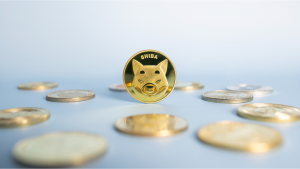
Currently, there are over 10,000 cryptocurrencies in the market, each with different objectives. Some aspire to become mainstream currencies, while others focus on providing affordable loans in developing countries. Certain cryptocurrencies aim to revolutionize the internet, while others have more playful purposes, like a coin protesting Elon Musk’s tweets or pet coins inspired by Dogecoin’s meme appeal.
One of the most overlooked opportunities is short-selling in the crypto market. Going contrarian on certain overvalued cryptos can be highly profitable. While shorting meme cryptos may seem risky, diversifying positions and avoiding leverage can mitigate potential downsides. Here are three cryptos to avoid in the current market.
Shiba Inu (SHIB)

Shiba Inu (SHIB-USD), originally considered a “Dogecoin (DOGE-USD) killer,” is now an independent cryptocurrency used for peer-to-peer payments and accepted by some businesses. Despite its popularity, it remains a relatively small market cap coin but has been gaining traction. People buy and use Shiba Inu as a digital currency.
SHIB lacks the vital elements for sustained success. Delayed Shibarium launch and underwhelming token burning cast doubts on its future. Meme coins like Shiba Inu have failed to meet expectations, leaving investors unsatisfied.
The popularity of Shiba Inu can be a double-edged sword. While it attracts attention, the constant emergence of new meme coins diminishes its potential to remain a long-term favorite. The competition in the meme coin market poses challenges for Shiba Inu to maintain its popularity over time.
Pepe Coin (PEPE)

Pepe (PEPE-USD), a meme coin inspired by the Pepe the Frog internet meme, is overvalued at over $650 million despite claiming no tax, a redistributive system, and a burning mechanism. While some hope it could be the next Dogecoin, its prospects in the current market are doubtful, and it may lose popularity as meme coin hype wanes. Investors should be cautious about its long-term potential.
Despite its high trading volume and retail investors’ fascination, PEPE remains a risky meme crypto. While some have profited from it, the future is uncertain, and history shows that meme tokens like PEPE often experience significant crashes, potentially harming those who invest in them.
Pepe coin’s downfall is due to its limited practicality as a novelty meme currency. Unlike other meme coins, it lacks real-world value and innovation. Speculation and volatility drive its price, and legal issues may arise from intellectual property concerns. As a result, major exchanges might avoid listing Pepe.
Dogecoin (DOGE)

In a surprising turn in the past weeks, Dogecoin has gone from being the worst-performing to the best among the top 10 cryptocurrencies. The recent Twitter rebranding announcement by Elon Musk contributed to a significant increase in trading volume, up by 322% on July 24, and a 5.1% price increase for DOGE.
Dogecoin still has a loyal following, and some believe it could make a comeback. However, its price has dropped nearly 90% from its peak in 2021, and it lacks the utility and value offered by other cryptocurrencies like Ethereum (ETH-USD) or Solana (SOL-USD), making it less appealing for widespread use and investment.
It’s obvious that the value of this token solely depends on investor sentiment and headlines. As with other meme coins, its long-term value remains uncertain and unpredictable. Dogecoin is a risky proposition in the current market environment, and investors should exercise caution when considering investing in it.
On the date of publication, Chris MacDonald did not have (either directly or indirectly) any positions in the securities mentioned in this article. The opinions expressed in this article are those of the writer, subject to the InvestorPlace.com Publishing Guidelines.






